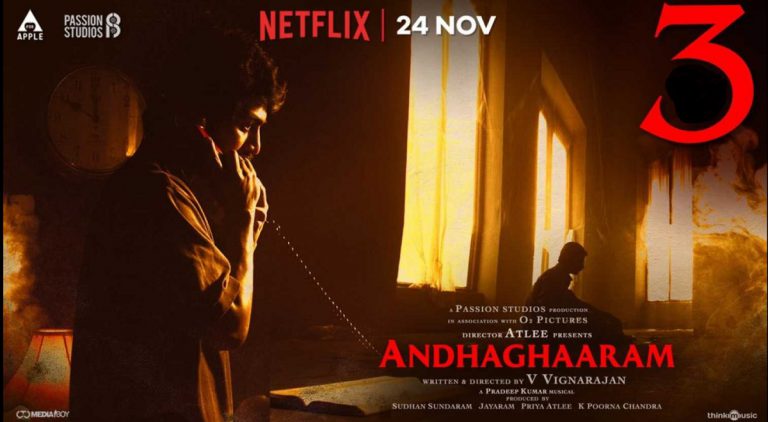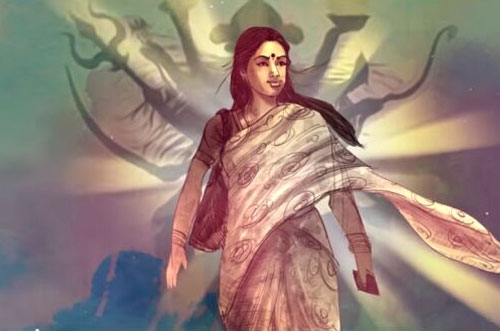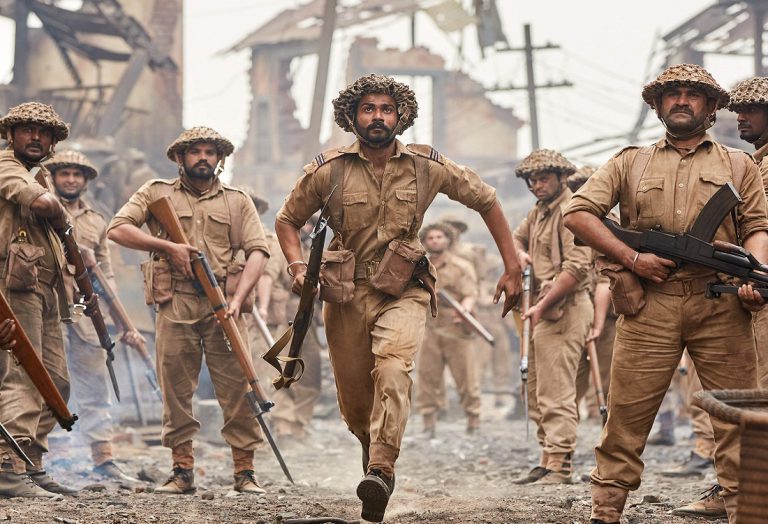The violence of capitalism: Revisiting Arun Prabhu’s Aruvi (2017)

Violence is intrinsically anthropogenic, oftentimes dangerously teetering over — or in simpler terms, driven by problematic socio-politico-economic systems and ideologies ingrained in society. The World Health Organization (WHO) offers an en masse definition of violence, describing it as “the intentional use of physical force or power, threatened or actual, against oneself, another person, or against a group or community, that either result in or has a high likelihood of resulting in injury, death, psychological harm, maldevelopment, or deprivation.” Quite some research has been done to figure out the biological aspect of violence in humans mostly at the cost of the much more impactful social influence. But the discourse on violence is expanding and becoming more accommodative. Philosopher and cultural critic Slavoj Zizek is one of the prominent scholars to write on violence. In his anthology Violence: Six Sideways Reflections (2007) he explicates violence elaborating on its presence in three forms; subjective; pertaining to crime and terror, objective; consisting of racism, hate speech and discrimination, and systemic; which includes catastrophic effects of economic and political systems. He states that oftentimes one form; objective violence, overpowers and blankets the others from the naked eye. Zizek’s primary concern seems to promulgate the endemic nature of systemic violence in society.
The question, whether cinema is a reflection of reality or whether cinema influences society is one of perpetual ambiguity. However, it is almost undeniable that there exists no better medium than cinema to interact with society. Therefore, the Tamil film Aruvi (2017) by Arun Prabhu has been taken into consideration here. Before trying to dissect the film, it might help to be a bit aware, if not understand, the generic representation of violence in the Tamil film industry. Every once in a while Kollywood sweeps its audience off of their feet with its apparently realistic presentation of violence, undoubtedly most of them fall into the North-Madrasesque setting, characteristic of objective violence; prone to gang-wars and petty to serious crimes. This is a creative exploitation undertaken by many directors ranging from veterans to newcomers. Nevertheless, most of these films are a delight to watch, and quite a few even try to pick up new perspectives within the popular realm, highlighting the systemic violence underlying the more spectacular objective kind. This though does not mean that the industry is devoid of films that address other kinds of violence. Films like Joker (2016) —the Tamil film and not the more recent and popular Joaquin Phoenix psychological thriller— and Pariyerum Perumal (2018), although just a few, are beginning to frequent the screens, though they the risk of being categorized as social commentaries which are infamous (not always) for faring not so well at the box office.
This compartmentalization is defied not only by Prabhu’s reference to Aruvi as a new-age masala film but also because of its amazing sell-out at the screens. The film has a predominantly debutant ensemble cast and crew, who have churned out a pretty good piece of work, and it actually does take up certain issues that have been hardly touched upon by mainstream Tamil feature films. Aruvi revolves around the twenty-five-year-old eponymous character whose rosy and full-of-sunshine life comes crumbling down with her HIV positive diagnosis and the consequent ostracization and oppression she encounters. Deflecting from a chronological storyline, Aruvi’s life is revealed through flashbacks, sometimes emitting a whiff of anecdote as it appears interspersed between other characters’ recounting of her. The film commences with Aruvi facing interrogation at the hands of a police officer suggested by a montage of scenes and her first utterance in the film is a yelp on being slapped. Aruvi transforms from a toddler to a teenager to a young adult over the course of songs, interrupted by short episodes offering snippets of dialogue as her life progresses, right until just before how and why she ends up being interrogated. The songs do not merely wax and wane in the background but communicate a lot themselves, quite remarkable, courtesy of Bindhumalini and Vedanth Bharadwaj who composed 33 tracks for the album and the ingenuity of Kutti Revathi and Prabhu reflected in the eloquent lyrics.
Though the thrashing on screen is sparse, the film is riddled with violence. Aditi Balan’s character, Aruvi, moves a reality-justice television programme, “Solvathellam Sathyam”; a riff-off of an actual show popular on one of the regional channels, where an anchor plays second fiddle to the justice system, doling out informal adjudications on a spectrum of issues, mostly extremely private, to seek apology from three men who sexually violated her. She is forced to move out of her house and fend for herself and these men; her friend’s father, an employer, and a pranic healer, take advantage of her situation. This is an attempt at bringing out the stigma surrounding HIV and the discrimination meted out to the R+ (HIV retrovirus positive) community. Aruvi is left with no one beside her except her friend Emily, played by transwoman Anjali Varadhan, whose character facilitates casting subtle glimpses of the prejudice and inequity faced by the transgender community, rather wittily through humour. When someone catcalls Emily on the street, she reacts wittily by commenting on how men can even let someone like Aishwarya Rai walk by but cannot help ogling at aravanis, asking with a chuckle “Naanga yenna avlo azhaga va irukom?” meaning “Are we that beautiful?”. While Emily is saved from one stereotype she succumbs to another. She is not the generic struggling trans character on screen but a lively individual with desires. For instance, in the film she does not shy away from calling another character cute because she finds him so. However, she does slip into the selfless maternal friend figure. She is the only constant support Aruvi has and stays beside her when family and friends don’t and takes care of her through tough times. She is Aruvi’s female Friday.
More apparent than these is the attack on capitalism, quite exemplarily presented in the form of a little over 3-minute long emphatic rant delivered by Balan. Monologues have had a way with the Tamil audience, enamoring them since Parasakthi (1952) days, and Balan’s is placed in a courtroom as well; only self-proclaimed, a trope very artfully employed by the makers of the film. The film’s intention does not seem to be blaming “samudayam mattrum soozhnilai” —community and situation— but contrarily exemplifying how society itself is victimized by exposing the edifice of society that makes people lead a hamster wheel life constantly chasing things to attain so-called-happiness. The monologue comes off as a well-prepared critique of the middle class and its aspirations, to lead a certain style of living to maintain their stature in society among others. It breaks down capitalism by directing attention towards the monotony of life; having a job, a family, a house – one adorned with things the market dictates one to buy, a fancy car and so on, foregrounding the farce of consumerism. Society respects those who own money, irrespective of how they earn it or whom they trample upon to earn it. Sometime later, there is a small bit on the economic viability behind keeping diseases alive to ensure a steady circulation of money; medical market, another paradise for capitalists. The film also does not forgo the opportunity to throw light on the media’s hypocrisy in perpetuating what it pretends to prevent – prejudice. This is achieved not just by talking about the trashy-films that are produced but also with the behind-the-scenes of the reality show, yet another brazen jibe at the TRP-driven industry and its hunger for sensationalism.
When Aruvi reveals on the sets of the show about her medical condition, it does not take long for the anchor to switch sides, good ol’ victim-blaming makes an appearance. Soon after the monologue, things turn a bit murky when the anchor starts humiliating her. Aruvi in a fit of frustration pulls out her grandfather’s pistol still demanding only an apology from her perpetrators. However, she does shoot the director of the show on his arm when he starts yelling at the camera person for missing out on the on-stage chaos. She almost lets them off but one of her perpetrators feels too outraged by this and physically assaults Aruvi and Emily, another of the rare spectacles of “actual” violence in the film. Being a victim of rape or suffering from a chronic disease is not her only identity. She picks up a microphone stand and hits back, swinging the rod right across the man’s face. This moment becomes essential in marking one of the important digressions of the film. Aruvi is portrayed not as a victimized woman but one still full of anger and life. Eventually, she holds everyone at the studio hostage, forcing them to perform tasks and role-play turning it into a game of sorts, but it all dissipates into a comic episode, until the police get involved which leads to her interrogation.
Aruvi is not a violent film; it is an entertainer. However, the systemic violence in it is not inconspicuous; it is the crux of the plot. Violence does not visit yielding weapons but lurks in the shadows enticing society to indulge in it indirectly. Aruvi and Emily are representatives of those individuals who occupy the periphery of society; marginalized outcasts. The oppression they face is multifarious; gender, sexuality, class and disease haunt them. Police brutality and transmisogyny are just specks that garnish the more serious and all-encompassing cruelty of capitalism in the film. Bruce B. Lawrence and Aisha Karim in their book On Violence: A Reader (2007) talks about how even Marx held violence historically indispensable in the evolution of capitalism. He located “the origins of capital in the process that he dubs ‘so-called primitive accumulation,’… [to Marx] Capital is the original sin that ‘comes (into the world) dripping from head to toe, from every pore, with blood and dirt.’” (p.20). Zizek adopts a similar tone on the subject, adding that, “Marx described the mad, self-enhancing circulation of capital, whose solipsistic path of parthenogenesis reaches its apogee in today’s meta-reflexive speculations on futures. It is far too simplistic to claim that the spectre of this self-engendering monster that pursues its path disregarding any human or environmental concern is an ideological abstraction and that behind this abstraction there are real people and natural objects on whose productive capacities and resources capital’s circulation is based and on which it feeds like a gigantic parasite.” (p. 12).
Amidst all the rave reviews, Aruvi did miss a few shots. The casual letting off of rapists, to mention one, tops the list. It is pretty textbook style in terms of its progression. towards the end, it takes on the more universal audience-pleasing-climax way out. Nevertheless, it deserves appreciation for its tenacious attempt to initiate conversation on topics so far majorly untouched by mainstream media. It is indeed a neo-commercial film, but one with an overwhelming arsenal of eccentricities.
Works Cited:
“Definition and typology of violence.” Violence Prevention Alliance. https://www.who.int/violenceprevention/en/. Accessed April 29, 2020.
On Violence: A Reader. Edited by Bruce B. Lawrence and Aisha Karim, Duke University Press, 2007.
Žižek, Slavoj. Violence: Six Sideways Reflections. Picador, 2007.
Featured Image Credits: Hindustan Times








